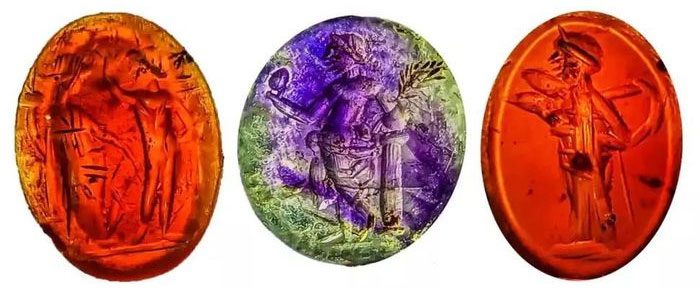Archaeologists have recently uncovered a dazzling 2,000-year-old stash of gemstones that clogged the drain of a Roman bathhouse in Carlisle, England.
Thirty carved semi-precious stones (known as intaglios) may have fallen from the rings worn by bathers around the 2nd and 3rd centuries AD, according to The Guardian.

A trio of gemstones found at a Roman bathhouse in England.
“It’s unbelievable,” said Frank Giecco, the archaeologist leading the excavation, to The Guardian. “They fell out of the rings of those using the bath. They were stuck on with plant glue and in the hot, sweaty bathhouse.”
Giecco described the intaglios as very small, with the smallest being about 5mm in diameter and the largest approximately 16mm.
Giecco remarked: “The craftsmanship involved in carving such tiny objects is astonishing.”
During the excavation, archaeologists also discovered an amethyst depicting the Roman goddess Venus holding a flower or a mirror, as well as a piece of jade carved with a depiction of a languid forest deity reclining on a stone bed.
Giecco stated: “You wouldn’t find such gemstones at lesser-status Roman sites. Therefore, they are not something for the poor.”
He suggested that bathers here likely did not realize they had lost their valuable jewelry until they returned home or may have fallen victim to a petty theft.
According to The Guardian, theft in bathhouses was so rampant that Roman baths in other parts of England displayed “cursing tablets” aimed at seeking revenge on thieves.
One tablet was inscribed with: “Whether slave or free, if you remain silent or know anything about it, you may be cursed in blood, eyes, and limbs, and even have your guts eaten out if you steal the ring.”
Additionally, archaeologists uncovered 40 women’s hairpins and 35 glass beads during the excavation.





















































